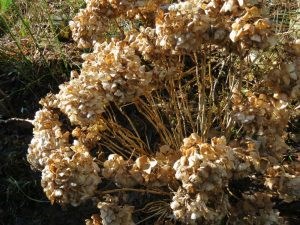It’s already March but it’s time to think about pruning in the garden. For many of us, we haven’t been able to get in the garden due to all the snow we had this winter. Spring is finally here on the West Coast of British Columbia and the plants are growing quickly. Plants that normally get pruned back in February are buddleia, hydrangea and clematis. Prune clematis that bloom from June to September now. Leave the spring blooming clematis and prune them back after they bloom. It’s the same with spring flowering shrubs which get pruned after flowering, not before.
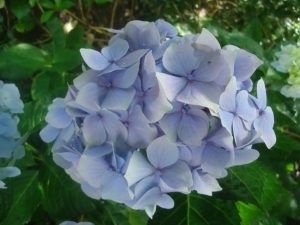
Start by cutting back the branches that flowered last summer on the mop-head hydrangeas. I usually trim back to just above a new bud located below the spent flower.
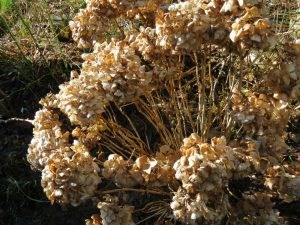
The branches that didn’t bloom last year will bloom this year so don’t cut them back. If the plant is quite old, take out one third of the oldest branches at the base to thin out the plant. On the plant above I cut off all the old flowers and removed any dead or broken branches.
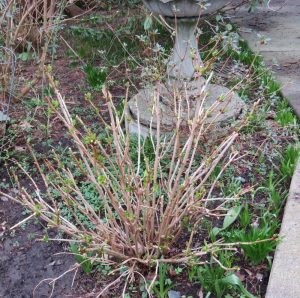
The hydrangea is now cleaned up and sending out new growth. I love this hydrangea as it came from my daughter’s place and brings back memories of us shopping together for it.
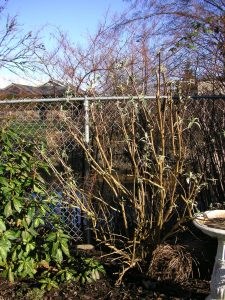
This butterfly bush needs a hard cutting back this year. Its leaning forward to reach for light and may just get removed. The jury is still deciding on whether to keep it or move it somewhere where it can have more room to grow. I love watching the butterflies on this shrub and it’s so fragrant. Here it isn’t as weedy as in other areas. I have never had it go to seed. If I could only say that about some of the other rambunctious plants in our garden.
Upon looking at some of the clematis in the garden, only a few have started to leaf out so now is the time to cut them back so you have new growth and flowers lower down on the plant. I am doing some tough love pruning on one of my clematis that got away on me.
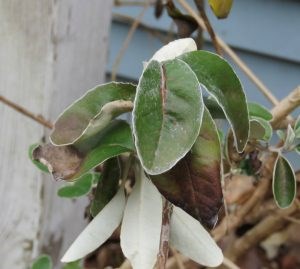
Senecio or Brachyglottis greyii, which is the new name for this plant, had some winter damage and its lovely grey leaves turned an ugly brown. Normally this lovely soft grey plant is hardy here but this winter took its toll on a lot of plants. I cut back each branch to just above a node where new growth would appear and there are signs it’s going to recover.
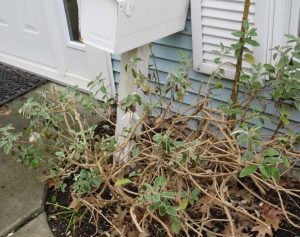
Be careful when cutting back grey leaved plants as they don’t do well if left with only bare wood. As the Brachyglottis recovers I will do another pinching back to encourage a fuller plant. Normally it’s a mound of soft grey leaves with no wood showing. Its a great filler for bouquets from the garden.
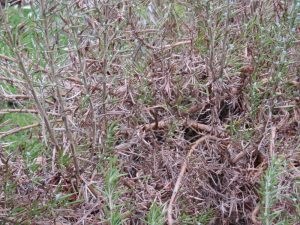
Rosemary also had a hard time this winter. It likes a well drained site and with all the snow it probably sat with wet feet for a good part of the winter. Our clay soils don’t drain quickly. Top that off with heavy snow cover you may find your plant a bit distorted looking now. Cut off all dead and broken branches and stand back to look at your plant. Wayward branches can be removed but leave as much leaf cover as you can.
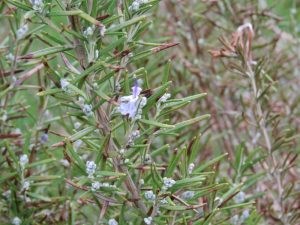
I noticed that even though it was a rough winter my rosemary plant is putting out flowers this week.
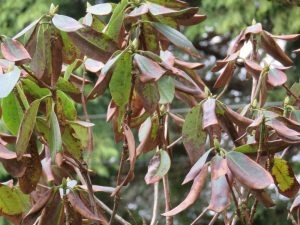
One of the hardest hit plants in the garden was a Rhododendron which towers over me. Here you can see how the upper leaves on the plant are damaged from winter. This has never happened before. Pruning now means I will have fewer flowers. Decisions, decisions. I think giving it a good pruning after bloom will encourage new growth over the growing season. Let's hope we don’t have another repeat of this winter.
